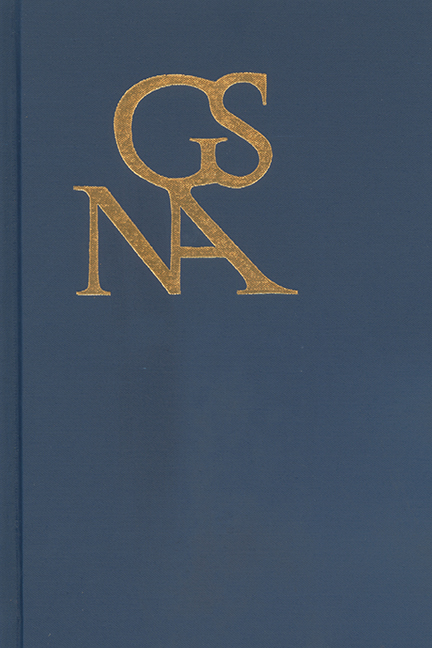Book contents
- Frontmatter
- Contents
- Building Bridges: Goethe's Fairy-Tale Aesthetics
- Goethe as Mystagogue
- Observing Neutrality, circa 1800
- Goethe, Faust, and Motherless Creations
- Impossible Ideals: Reconciling Virginity and Maternity in Goethe's Werther
- Kant, Calculus, Consciousness, and the Mathematical Infinite in Us
- The Classical Aesthetics of Schlegel's Lucinde
- Special Section on Visual Culture in the Goethezeit
- Book Reviews
Observing Neutrality, circa 1800
Published online by Cambridge University Press: 25 February 2017
- Frontmatter
- Contents
- Building Bridges: Goethe's Fairy-Tale Aesthetics
- Goethe as Mystagogue
- Observing Neutrality, circa 1800
- Goethe, Faust, and Motherless Creations
- Impossible Ideals: Reconciling Virginity and Maternity in Goethe's Werther
- Kant, Calculus, Consciousness, and the Mathematical Infinite in Us
- The Classical Aesthetics of Schlegel's Lucinde
- Special Section on Visual Culture in the Goethezeit
- Book Reviews
Summary
Heiß mich nicht reden, heiß mich schweigen
—Goethe, Wilhelm Meisters Lehrjahre (MA 5:357)FOR HIS SEMINAR held at the Collège de France during the spring semester of 1978, Roland Barthes offered his students a series of fragments collected under the title “The Figures of the Neutral.” What he wanted to provide was a dictionary, “not of definitions but of twinklings (scintillations)” (Barthes 10). It was to be a loose collection, reflecting the fact that the neutral appears in a number of widely differing contexts and also embodies a particular kind of resistance with regard to choice or “paradigmatic structures”—a resistance that could, he writes, also be understood as “the refusal to dogmatize” (Barthes 10). The twenty-three seminar sessions were devoted to topics whose connection to the neutral is at times relatively obvious (“the androgyne,” “tact,” etc.) and at times less so (“the adjective,” “affirmation,” etc.). Barthes's selection frees the neutral from any thematic rigidity and allows it to “twinkle” in unexpected places. By making neutrality an open and prolonged topic of discussion, he also opens the door for ironic play with one of neutrality's main taboos: the production of speech itself. Such discussions might, at best, strive for impartiality, but as we will see with regard to neutrality, once the first word has been uttered, one can no longer hope to remain neutral where the neutral is concerned.
The discussion of neutrality in the following pages will take its cues from Barthes, who has an approach to neutrality that moves lightly between different disciplinary contexts—Barthes mentions in his lecture notes that he takes the word “neutral” “for a series of walks along a certain number of readings”—and that is committed to a certain structural definition of the neutral as “that which outplays the paradigm” (Barthes 6). In the present article, as well, there is an attempt to balance between discursive mobility and structural contour. Here, the focus is narrower: both as regards the historical parameters, lingering in the decades around 1800, and in terms of choosing case studies where the problem of the neutral is directly addressed in terms of human relations and in scientific contexts.
- Type
- Chapter
- Information
- Goethe Yearbook 23 , pp. 41 - 58Publisher: Boydell & BrewerPrint publication year: 2016

